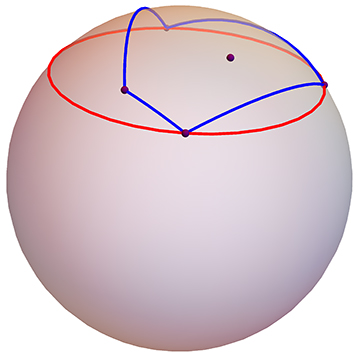I am asking this question to know more about this problem that I find very interesting.
The problem is that suppose you have the unit 2-sphere $S^2$ in $\mathbb{R}^3$ and a measurable subset $A \subset S^2$ such that $\mu(A)=0.9\mu(S^2)$. Then prove that you can find a cube whose vertices will fit inside the set $A$.
This question has been asked and answered before:
https://math.stackexchange.com/questions/573926/surface-of-a-sphere-and-cube
https://math.stackexchange.com/questions/499854/problem-regarding-the-fitting-cube-into-sphere
I want to know where this question originates from. Is this question part of some general type of questions that are encountered in a more general setting (for example coding theory)? What are the known developments?

